Black-tailed Godwit Limosa limosa
Icelandic Black-tailed Godwit, L.l. islandica is a common passage migrants and winter visitor. The European race L.l. limosa is a rare migrant and has bred, last in 1974, and around 50 pairs breed annually in Britain up to 2019.
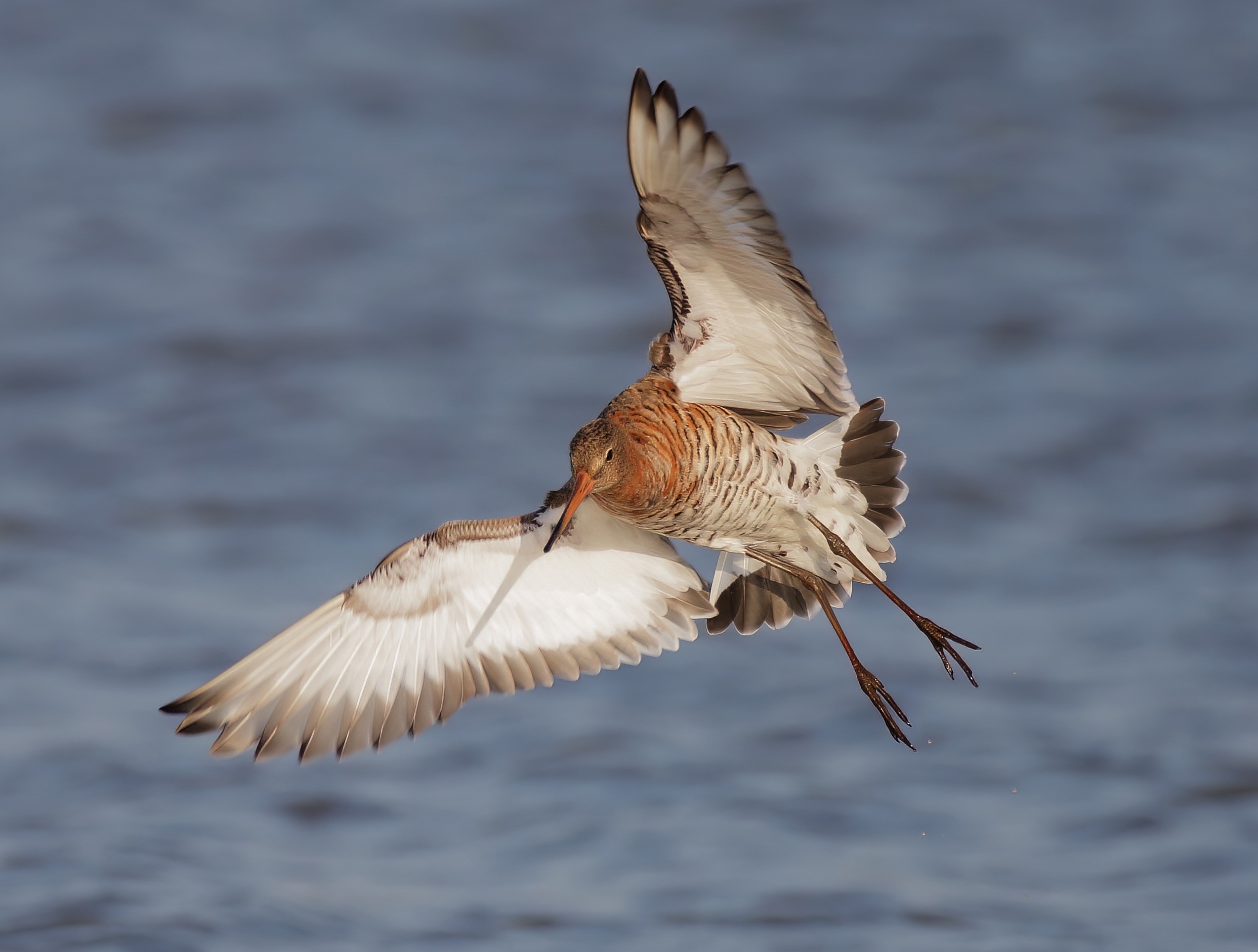
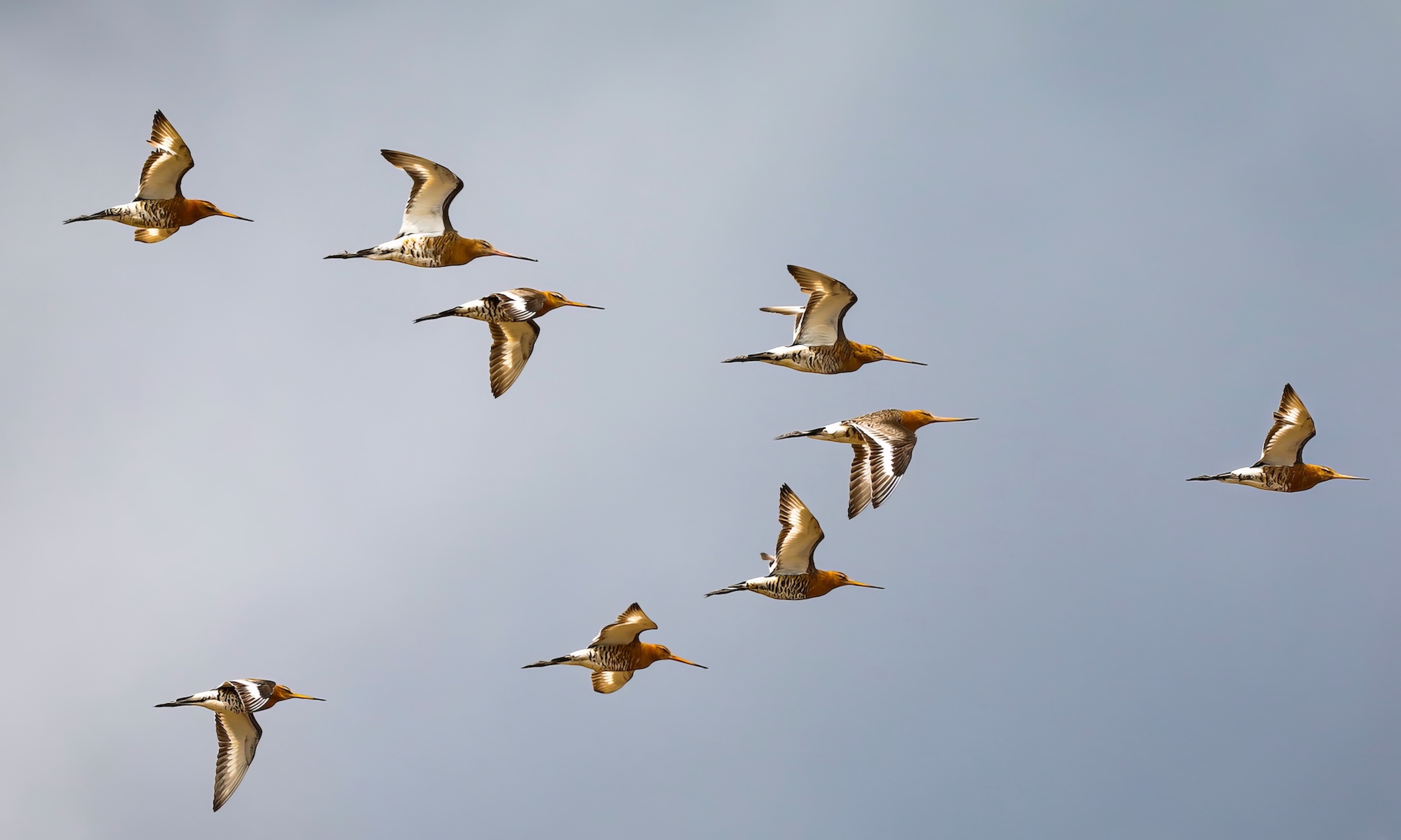
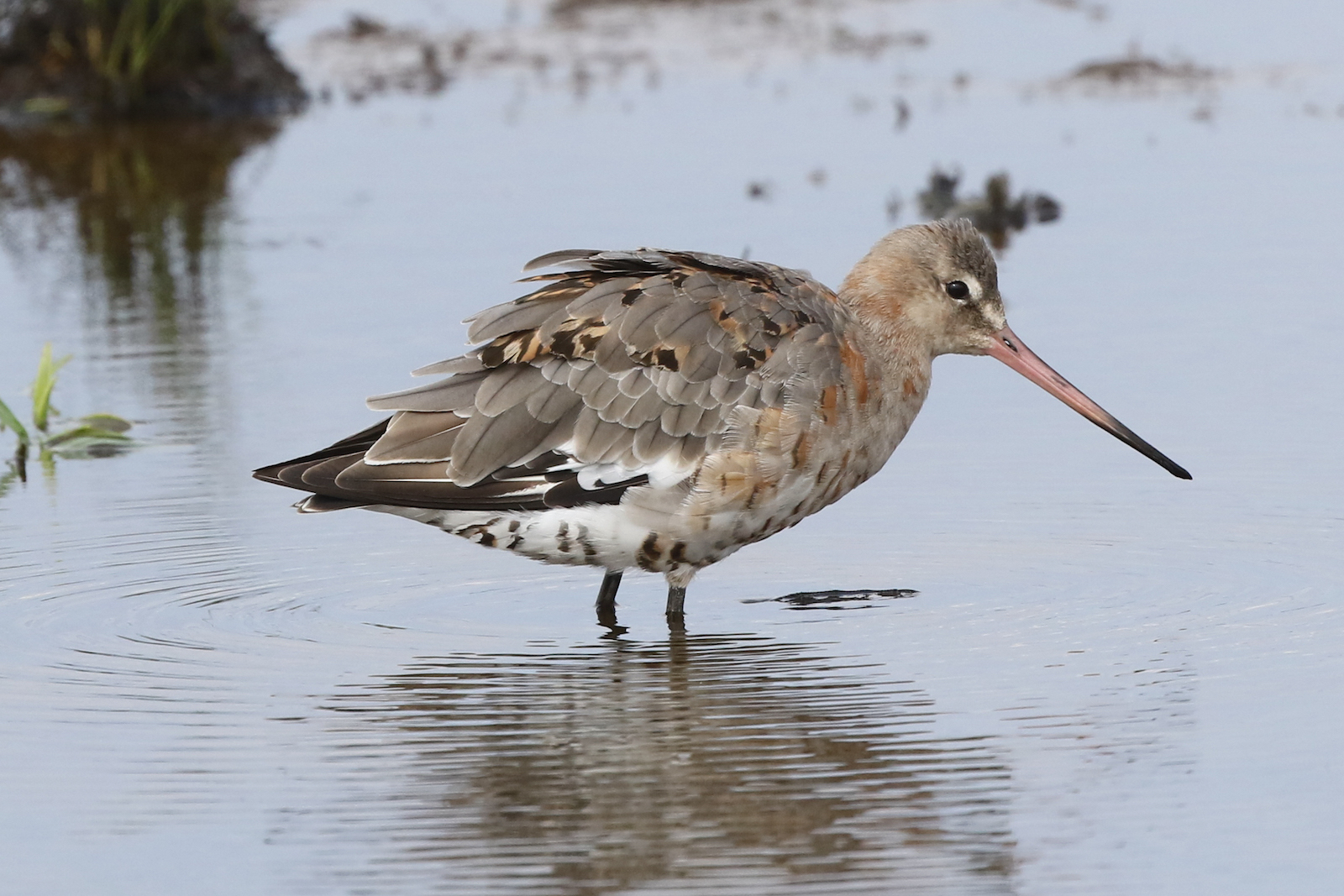
Prior to the drainage of the Fens, Black-tailed Godwits bred in some numbers. Regular breeding ceased in 1829 and as migrant it became rare and irregular from the middle of the nineteenth century. A nest with eggs was said to have been found near Wainfleet in 1885 and much later a pair bred at Cowbit in the Fens between 1940 and 1942. Successful breeding was also recorded nearby at Crowland Wash in 1951 and single pairs nested in the Humber in 1974 and 1979. Since then there have been sporadic breeding attempts in the Humber and the Wash and although small numbers summer every year no breeding attempts have been reported since 1990.
The Icelandic race, L.l. islandica, is the commonly seen race in Britain and in Lincolnshire although there were many fewer 20 years ago. Since the 1990s the ratio of the two races in Europe has changed quite dramatically. European L.l. limosa used to number around 200,000 in the 1960s but has declined to around 60,000. There are no good historical counts for islandica, but it is estimated that there was c.50,000 in the early 2000s. However, whereas limosa probably outnumbered islandica by about 8:1, the two are now probably closer to 1:1. Most limosa winter in west and south-west Europe but virtually the whole of the Icelandic islandica population winters exclusively in Britain. The BTO WeBS data show a 228% increase in islandica, 1992/93- 2017/18. This has been reflected in the county and a record count of 10,505 roosted at Freiston Shore in November 2019. There is also a growing catalogue of colour-ringed records in the county showing the origins and movements of these long-lived shorebirds as the species is the subject of an intensive project based at the University of East Anglia (see below).
The European race L.l. limosa is not regularly recorded in the county and is difficult to separate from islandica in the field. However, there is one recent confirmed record of limosa at Frampton Marsh: a bird colour-ringed bird as a chick at the Nene Washes was seen on April 24th 2019. Project Godwit is a partnership between RSPB and WWT aiming to supplement the Ouse Washes limosa population through a rear-and-release programme to help re-establish the birds at sites adjacent to the Ouse Washes.
The charts below are illustrative of the patterns of occurrence of Black-tailed Godwits in the county up to 2016. The data used are the monthly peaks in two areas: on the Humber between Goxhill and Pyewipe (Grimsby), and on The Wash at Freiston Shore and Frampton Marsh. For each area, the single highest count in each month has been selected; this may understate true totals if (for example) birds were at Frampton Marsh when the highest count was made at Freiston Shore. The counts may well understate peaks in any case, because only a few and sometimes no full counts are made per month and, with turnover of birds, the high point can easily be missed. Also, of course, while these two areas hold the majority of ‘our’ Black-tailed Godwits, other parts of The Wash and Humber can hold significant numbers.
The first chart shows the seasonal occurrence, with birds arriving from Iceland from July onwards, peaking in September-October, and then tailing off through the winter to reach the minimum level in June. The use of Lincolnshire sites is highest while the birds are moulting in the autumn with the majority on The Wash and the Humber, averaging more than 8000 birds in September and October. This emphasises the importance of the Humber and Wash to this species: any site regularly holding at least 1% of the European wintering population (610 birds) is regarded as internationally important. Those wintering in Britain number around 43,000 birds, all of the subspecies L.l.islandica (Musgrove et al2011). While many do remain here throughout the winter, a substantial proportion moves on to other estuaries further south before returning to Iceland, often via the west coast.
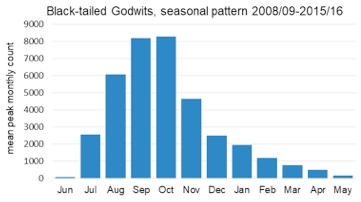
The second chart shows the annual peak for each June-May year in each of the areas. As can be seen, they support similar totals (the mean peak for Goxhill-Pyewipe is 4,645 and that for Freiston-Frampton is 5,362). There is no clear trend in either area. If anything, Goxhill-Pyewipe shows a slight increase, while Freiston-Frampton may be declining – but there is so much variation between years that these suggested trends are unreliable.
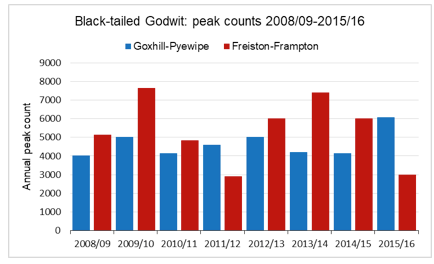
There are two colour-ringing schemes for Black-tailed Godwits. Most birds with colour rings will be L.l.islandica and should be reported to Professor Jenny Gill at the University of East Anglia; full details are here https://archive.uea.ac.uk/~b026515/schemes.html.
Another scheme, Project Godwit, is run jointly by the RSPB and WWT and is aimed specifically at the race L.l.limosa breeding at the Nene and Ouse Washes. Details should be reported through their website at https://projectgodwit.org.uk. These birds all have a lime-green ring with an engraved E on the right leg, so only these birds should be reported through the Project Godwit site.
Reference
Musgrove, A J, Austin, G E, Hearn, R D, Holt, C A, Stroud D A and Wotton S R. Overwinter population estimates of British waterbirds. British Birds104, 364-397.
(Account prepared August 2018; includes all records to 2016. Updated Sep 2022 with reference to the new Birds of Lincolnshire (2021), included September 2022)
